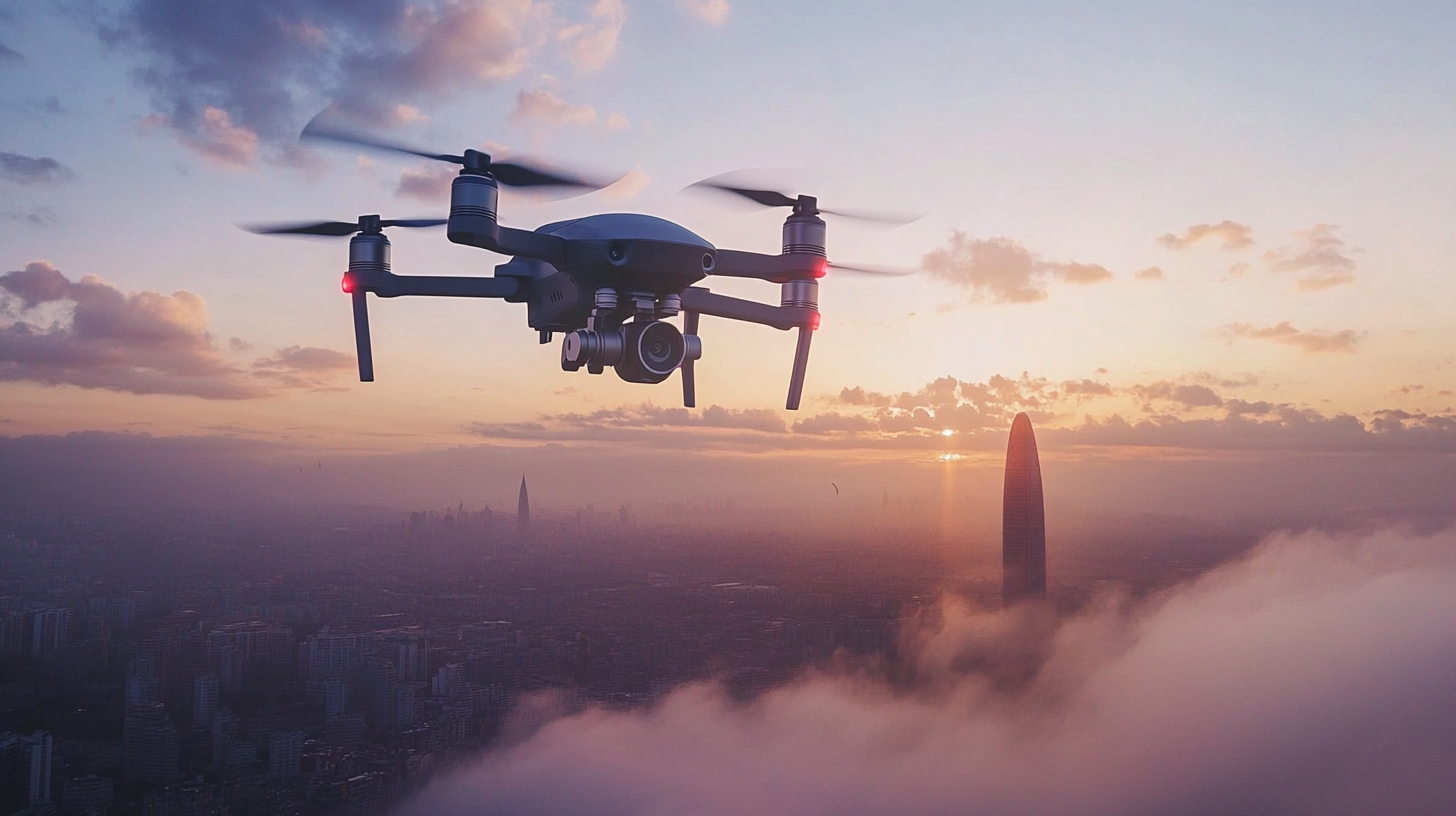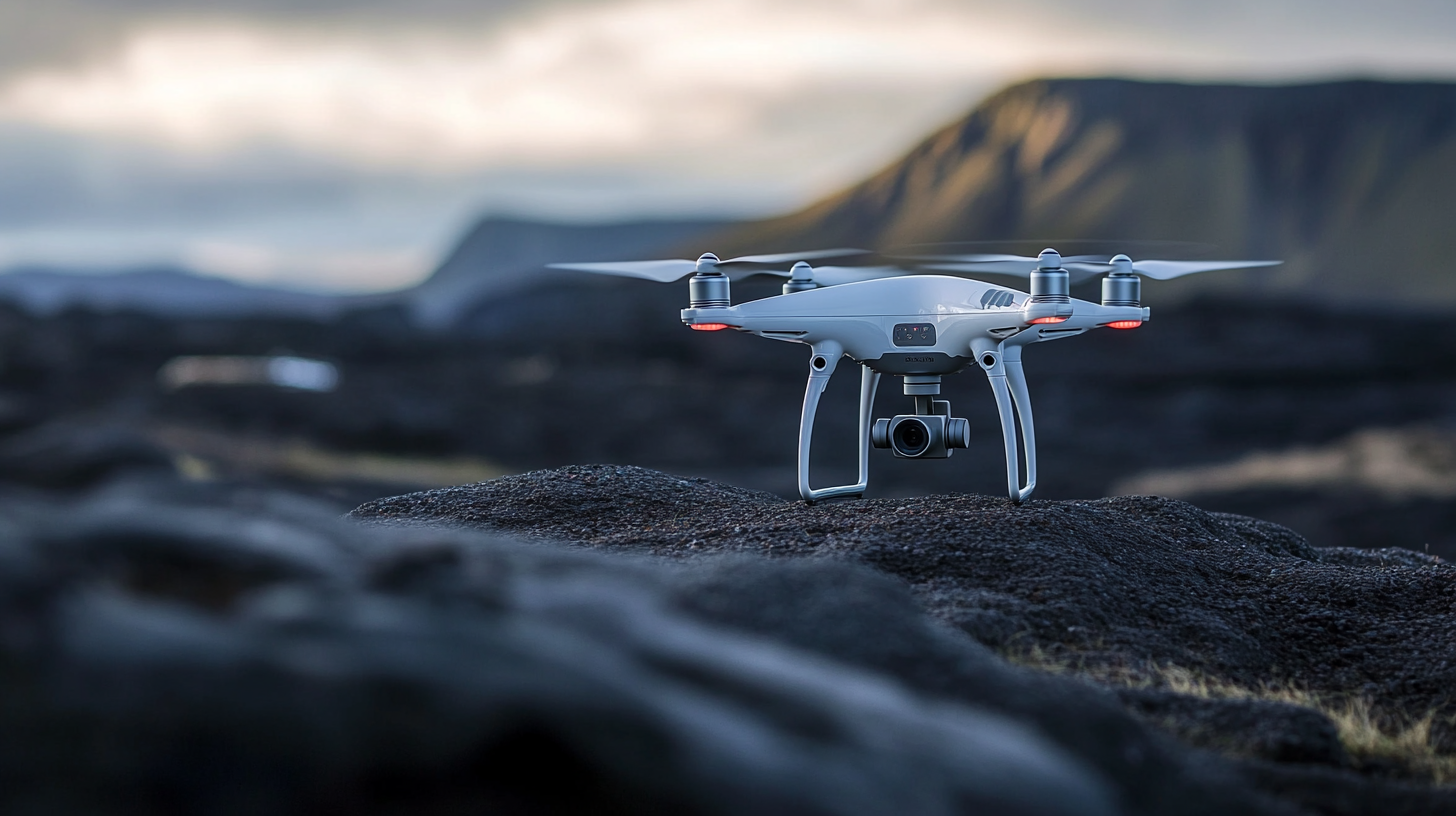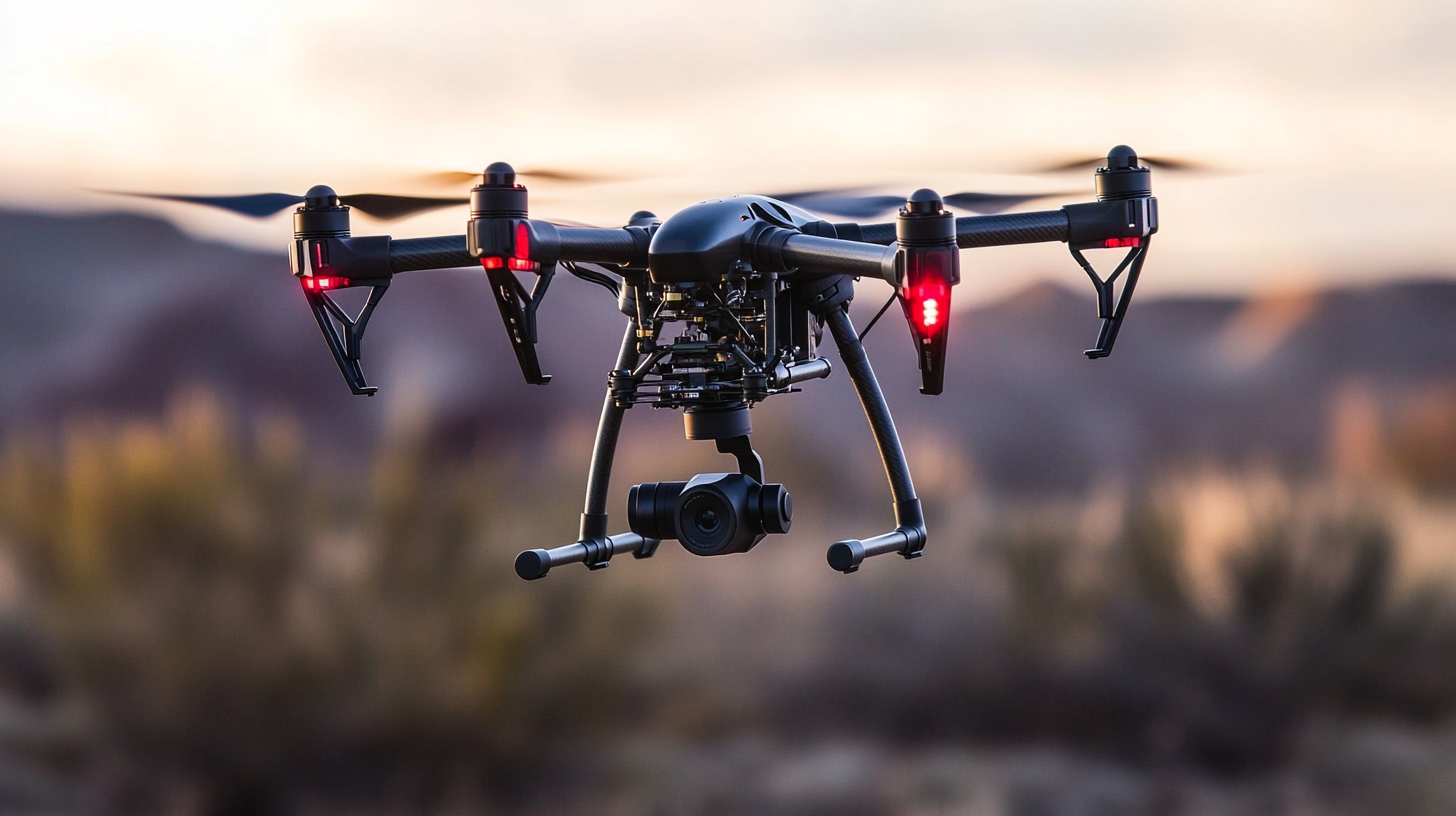Future Market Trends for Best Dji Uav Innovations by 2025
 In recent years, the market for UAVs (Unmanned Aerial Vehicles) has experienced unprecedented growth, with
DJI UAVs at the forefront of this innovative wave. According to a recent report by
MarketsandMarkets, the global drone market is projected to reach
USD 42.8 billion by 2025, with a compound annual growth rate (CAGR) of
27.4% from 2020 to 2025. DJI, as a leading manufacturer, is not only riding
this wave but is also setting the standard for advancements in drone technology, particularly in areas such as
aerial photography, agriculture, and industrial inspections. As we look towards 2025, the anticipated trends suggest
significant innovations in
battery life,
AI integration, and enhanced safety features that will further consolidate
DJI UAV's position in the global market.
By examining these upcoming trends and innovations, we can better understand the future landscape of UAV technology
and its implications for various industries.
In recent years, the market for UAVs (Unmanned Aerial Vehicles) has experienced unprecedented growth, with
DJI UAVs at the forefront of this innovative wave. According to a recent report by
MarketsandMarkets, the global drone market is projected to reach
USD 42.8 billion by 2025, with a compound annual growth rate (CAGR) of
27.4% from 2020 to 2025. DJI, as a leading manufacturer, is not only riding
this wave but is also setting the standard for advancements in drone technology, particularly in areas such as
aerial photography, agriculture, and industrial inspections. As we look towards 2025, the anticipated trends suggest
significant innovations in
battery life,
AI integration, and enhanced safety features that will further consolidate
DJI UAV's position in the global market.
By examining these upcoming trends and innovations, we can better understand the future landscape of UAV technology
and its implications for various industries.
Future Innovations in DJI UAV Technology: What to Expect by 2025
As we look towards 2025, the landscape of DJI UAV technology is set to undergo remarkable transformations. One of the most exciting innovations on the horizon is the integration of artificial intelligence and machine learning, which will enhance flight operations and data analysis capabilities. By leveraging these technologies, DJI drones will not only become smarter in navigation but also in decision-making processes, allowing for more autonomous flight patterns and improved obstacle avoidance.
Moreover, advancements in battery technology are anticipated to significantly extend flight times, making drones more viable for various applications, ranging from agriculture to emergency response. Enhanced energy efficiency and lighter materials will contribute to the development of UAVs that can stay airborne longer while carrying heavier payloads. This will empower industries to conduct operations previously deemed impractical, such as extended aerial surveys and large-scale mapping projects.
Additionally, the incorporation of 5G connectivity will revolutionize the way drones communicate with operators and other devices. This increased bandwidth will enable real-time data transmission, providing users with instant access to high-definition video and sensor data. As a result, DJI's UAVs will not only improve operational efficiency but also facilitate innovative uses, such as remote inspections and enhanced surveillance, redefining our expectations of drone capabilities by 2025.
Analyzing Market Growth: UAV Industry Valuation Projections by 2025
The UAV industry is on the brink of immense growth, with projections indicating a significant valuation increase by 2025. As technology continues to evolve, the demand for advanced drones, particularly from manufacturers like DJI, is set to rise. Increased applications in various sectors such as agriculture, logistics, and surveillance are contributing to a robust market expansion. Industry reports suggest that innovations in drone design, autonomy, and data analytics will not only enhance operational efficiency but also broaden the scope of UAV usability.
Furthermore, regulatory developments and the integration of AI technologies are expected to play pivotal roles in shaping the future landscape of the UAV sector. Governments around the world are beginning to establish frameworks that facilitate safe drone operations, thereby encouraging investment and promoting innovation. As UAVs become more autonomous and capable of performing complex tasks, their applications will likely extend beyond traditional boundaries, paving the way for diverse market opportunities and potentially leading to a multibillion-dollar industry by 2025.
Future Market Trends for UAV Innovations by 2025
This chart illustrates the projected market valuation growth of the UAV industry. The data represents the estimated market size (in billion USD) from 2023 to 2025 across various UAV applications.
Key DJI Features Driving Adoption: A Data-Driven Overview
 The rapid advancements in UAV technology, particularly from DJI, are reshaping the landscape of aerial photography and data collection. With features like enhanced camera capabilities, intelligent flight modes, and robust obstacle avoidance systems, DJI drones are becoming increasingly appealing to both hobbyists and professionals. Notably, the integration of AI for smarter navigation and real-time data processing is propelling adoption rates, enabling users to achieve stunning results with minimal effort.
The rapid advancements in UAV technology, particularly from DJI, are reshaping the landscape of aerial photography and data collection. With features like enhanced camera capabilities, intelligent flight modes, and robust obstacle avoidance systems, DJI drones are becoming increasingly appealing to both hobbyists and professionals. Notably, the integration of AI for smarter navigation and real-time data processing is propelling adoption rates, enabling users to achieve stunning results with minimal effort.
Tip: When considering the purchase of a DJI UAV, prioritize models that offer the latest camera technology. Higher resolution sensors not only improve image quality but also expand the potential for post-processing and commercial applications.
Furthermore, DJI's commitment to user-friendly interfaces has simplified drone operation, making it accessible to a broader audience. Features such as automated flight missions and smartphone integration allow even novice pilots to capture breathtaking aerial footage. As these innovations continue to evolve, we can expect to see increased usage across various sectors, including agriculture, real estate, and film production.
Tip: Stay updated on firmware upgrades and new feature releases. DJI frequently enhances its products through software updates, which can significantly improve functionality and user experience.
Impact of Regulatory Changes on DJI UAV Innovations in Upcoming Years
 As the drone industry continues to evolve, the impact of regulatory changes on DJI UAV innovations will play a pivotal role in shaping the market by 2025. Policymakers worldwide are recognizing the potential of unmanned aerial vehicles, leading to a more structured regulatory landscape. These regulations aim to ensure safety, privacy, and airspace management, which will inevitably influence DJI's approach to innovation. Navigating these changes will require DJI to adapt its technologies to comply with stricter operational guidelines while still pushing the boundaries of what UAVs can do.
As the drone industry continues to evolve, the impact of regulatory changes on DJI UAV innovations will play a pivotal role in shaping the market by 2025. Policymakers worldwide are recognizing the potential of unmanned aerial vehicles, leading to a more structured regulatory landscape. These regulations aim to ensure safety, privacy, and airspace management, which will inevitably influence DJI's approach to innovation. Navigating these changes will require DJI to adapt its technologies to comply with stricter operational guidelines while still pushing the boundaries of what UAVs can do.
Furthermore, the integration of advanced technologies such as AI and machine learning in response to regulatory frameworks will likely redefine the capabilities of DJI drones. As regulations evolve, outlining specific use cases for commercial applications, DJI will have the opportunity to innovate responsibly. This shift could result in UAVs that not only operate within legal frameworks but also provide enhanced functionality, such as automated compliance checks and improved data management systems. By 2025, we can expect that DJI’s innovations will be closely aligned with regulatory demands, ensuring a safer and more efficient integration of UAVs into everyday operations.
Consumer Trends in UAV Usage: Insights from Industry Reports for 2025
As we look ahead to 2025, the UAV market is poised for transformative growth, driven significantly by evolving consumer trends. Industry reports indicate that consumers are increasingly utilizing drones for personal and commercial purposes, with applications ranging from aerial photography to agricultural monitoring. The rise of social media has amplified the demand for high-quality aerial content, pushing DJI to innovate in camera technology and image stabilization features. This trend highlights how the consumer's desire for unique visuals influences product development in the UAV sector.
Moreover, convenience and accessibility have become pivotal in consumer UAV usage. Advanced features such as automated flight modes, real-time tracking, and intuitive controls are making drones more user-friendly, appealing even to novice pilots. Reports suggest that educational and recreational uses are on the rise, as individuals seek drones for hobbies and learning experiences. This shift presents an opportunity for DJI to cater to this expanding market with affordable, easy-to-operate models that do not compromise on quality. Understanding these consumer preferences will shape the future of drone innovations and market strategies in the years to come.
Future Market Trends for Best UAV Innovations by 2025
| Trend Dimension |
Projected Growth Rate (%) |
Market Segment |
Consumer Application |
| Increased Agriculture Usage |
15% |
Agricultural UAVs |
Crop monitoring and spraying |
| Expansion in Delivery Services |
20% |
Delivery UAVs |
Package delivery |
| Rise in Filming and Photography |
10% |
Aerial Photography UAVs |
Filming and event coverage |
| Regulatory Advances |
5% |
Commercial UAVs |
Public services and inspections |
| Integration of AI Technologies |
25% |
Smart UAVs |
Autonomous decision-making |